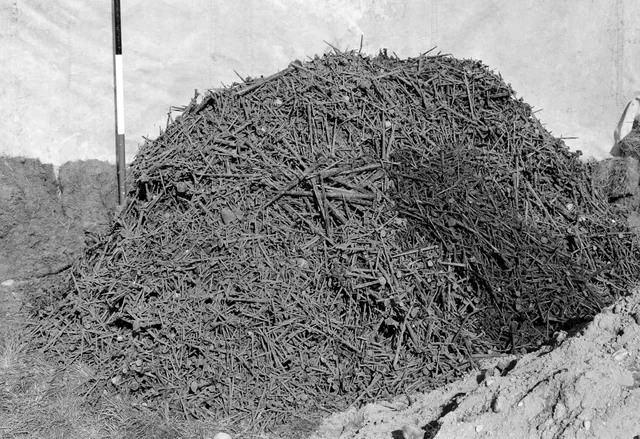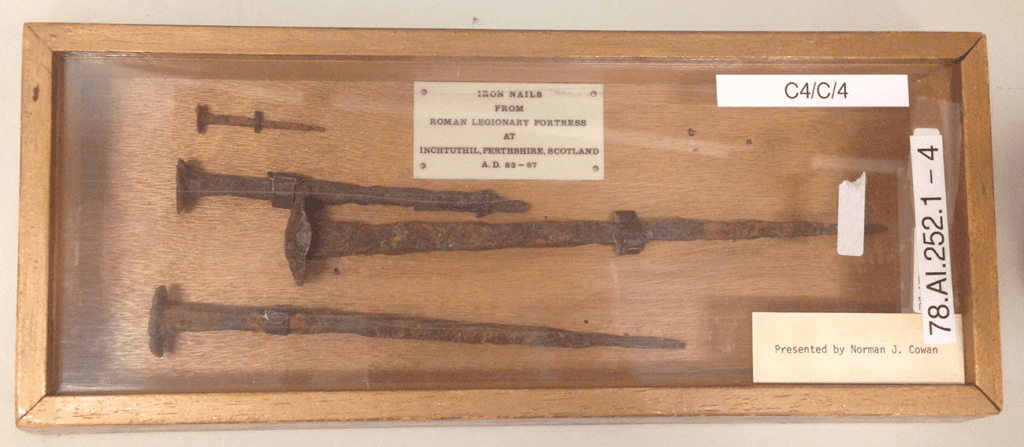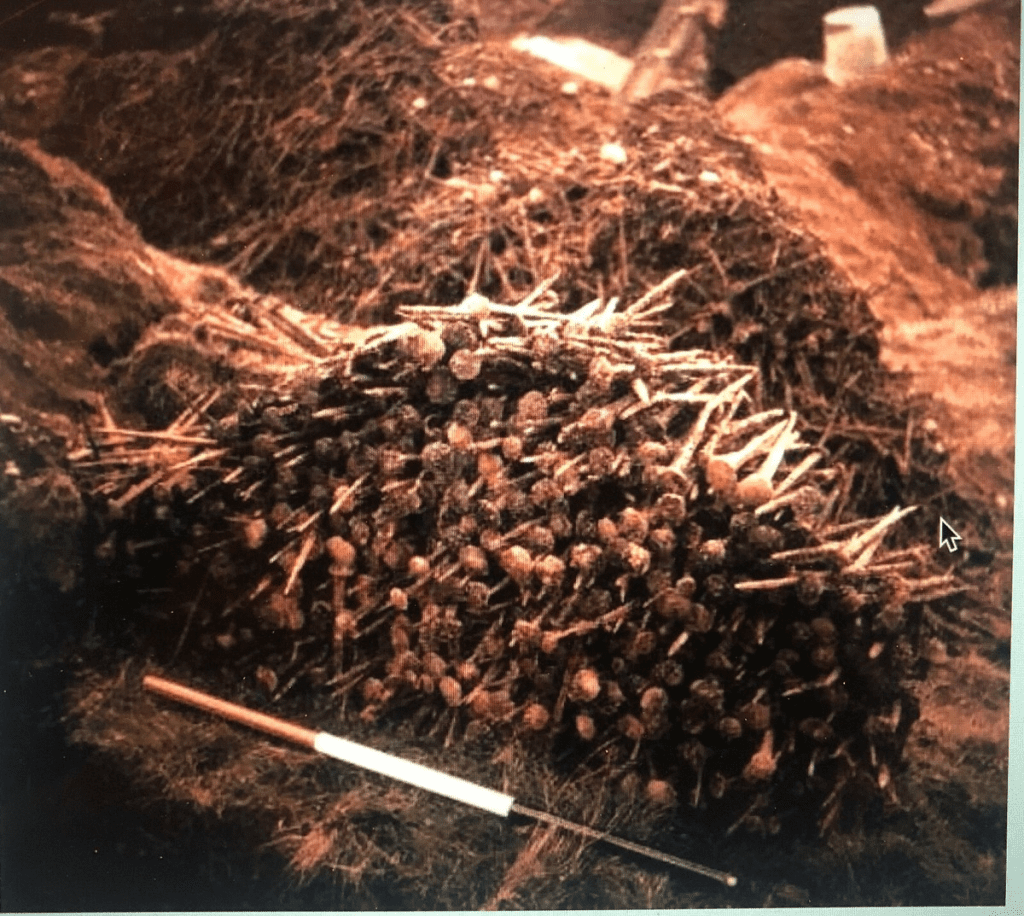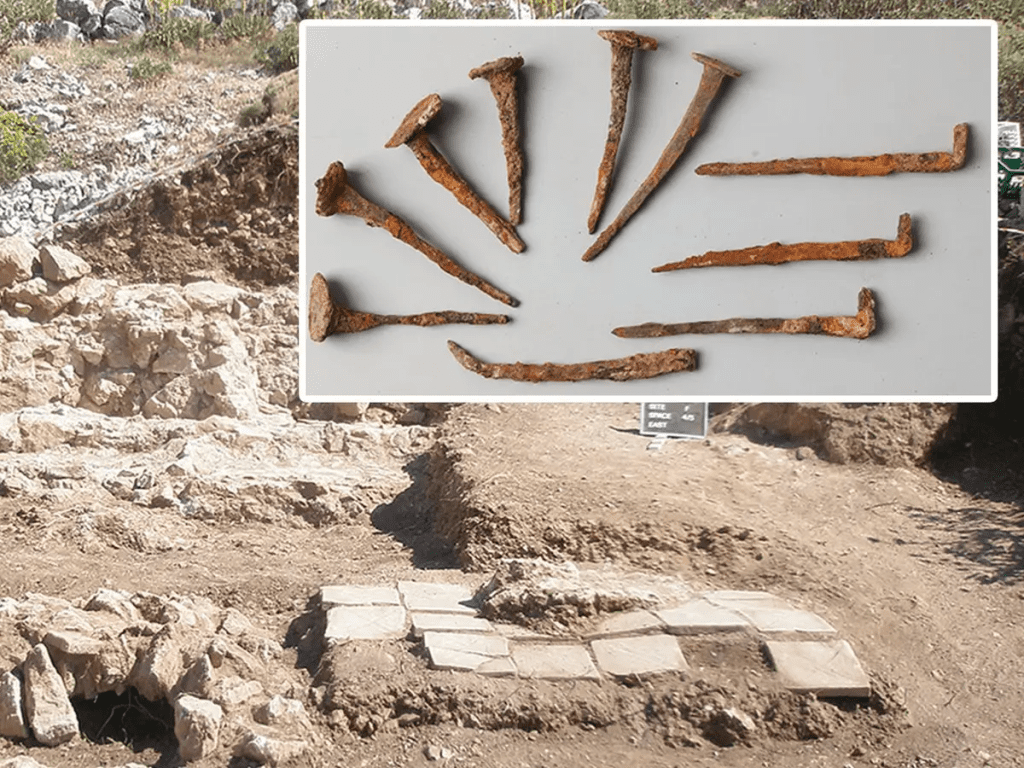In 87 AD, Roman soldiers made a brilliant tactical decision as they retreated from a fortress in what is now Scotland. Before leaving, they buried 875,000 iron nails worth seven tons hand-forged for military construction. These nails were essential for building military fortifications, and the Romans hid them to prevent them from falling into enemy hands. The hidden nails remained a secret until 1959, when archaeologists unearthed this remarkable find, revealing the incredible foresight and strategic genius of the Roman Empire.

The Strategic Importance of the Nails
The nails weren’t just construction materials; they were vital to the maintenance of Roman military power. By burying them, the Romans ensured that the enemy would be unable to use them for rebuilding the fortifications, slowing their efforts to take over the fortress. This strategic move was designed to prevent enemies from utilizing the very structures that were built to strengthen Roman military dominance.

The 1959 Discovery
The hidden nails were uncovered in 1959 during an archaeological excavation of the Roman fortress in Scotland. This discovery highlighted the Romans’ meticulous planning and logistical foresight. It was a reminder of how the Roman Empire’s strength wasn’t just in its armies but also in its ability to protect and manage its resources, even in retreat.
Video:
The Romans Buried 875,000 Nails to Stop Their Enemies! 🏰⚔️#HiddenSecrets
Roman Logistics and Military Strategy
The burial of these nails is a clear example of Roman logistical expertise. The empire was known for its ability to anticipate challenges and plan for the long term, whether in battle or retreat. The Romans understood that controlling resources and infrastructure was as crucial as military strength. This foresight contributed to their success in managing a vast empire.

A Legacy of Strategic Thinking
The discovery of the nails underscores the Roman Empire’s incredible ability to strategize and plan meticulously. It also highlights the importance of logistics in warfare. Even in retreat, the Romans made sure their resources were protected, ensuring that their enemies could not benefit from their hard-earned infrastructure. The buried nails are a lasting testament to the Roman genius in both war and logistics, showing how foresight and careful planning were key to their success.
Video:
GRAVE OF ROMAN SOLDIERS FOUND IN SOCCER FIELD
Conclusion
The burial of 875,000 iron nails in 87 AD is not just an archaeological curiosity but a powerful example of Roman tactical thinking. This strategic move reveals the empire’s deep understanding of warfare logistics, showing that the Romans’ success was built on more than just military might it was also their unmatched ability to plan for the future and protect their resources.



